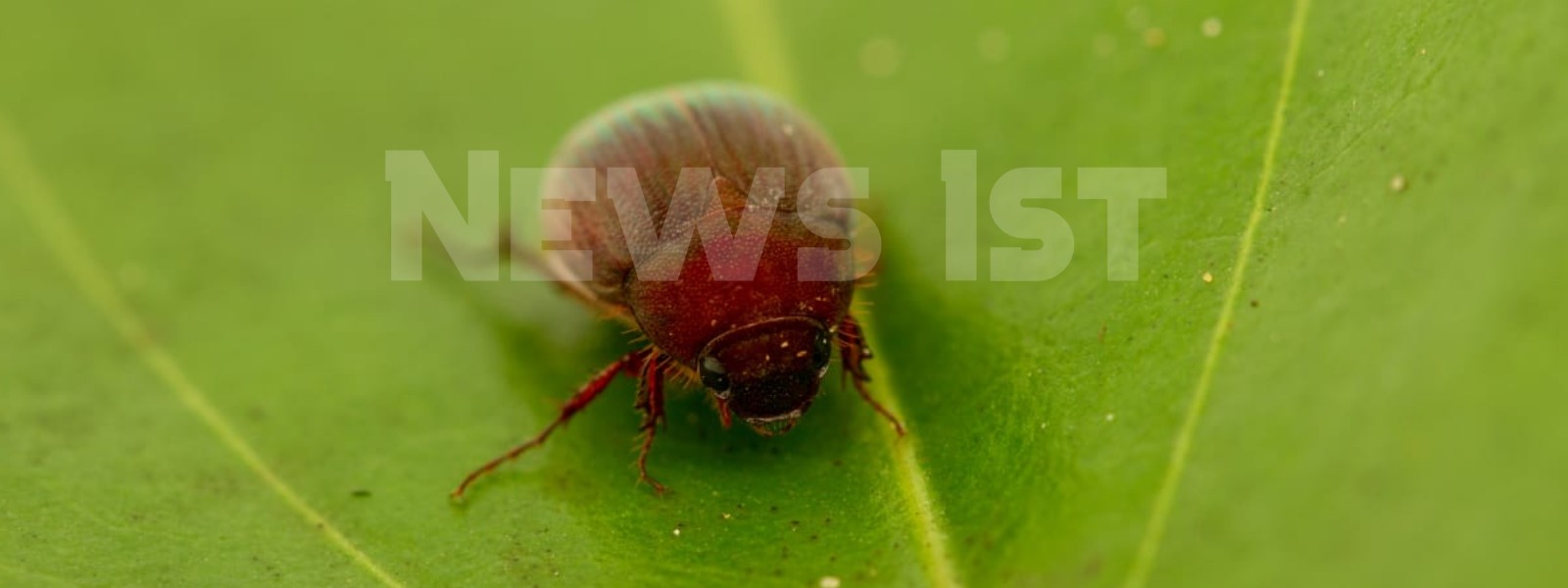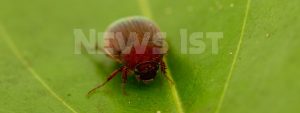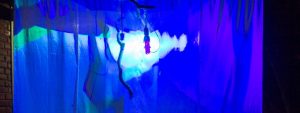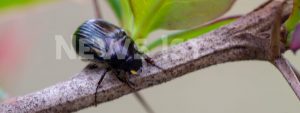.webp)

EXCLUSIVE : Four new species of Beetles identified in Sri Lanka
Colombo (News 1st) ; Four new species of Beetles were identified from Sri Lanka. The latest discovery is part of a project named “Biodiversity patterns of herbivore scarab chafers of Sri Lanka".
 This is a collaborative research project between National Institute of Fundamental Studies (NIFS), Kandy, Sri Lanka and the Zoological Research Museum Alexander Koenig (ZFMK), Bonn, Germany.
The project collaborators are Proffesor Suresh Benjamin, Dr. Dirk Ahrens, Dr. Jonas Eberle and Sasanka Ranasinghe.
This is a collaborative research project between National Institute of Fundamental Studies (NIFS), Kandy, Sri Lanka and the Zoological Research Museum Alexander Koenig (ZFMK), Bonn, Germany.
The project collaborators are Proffesor Suresh Benjamin, Dr. Dirk Ahrens, Dr. Jonas Eberle and Sasanka Ranasinghe.
 The first field expedition was performed on Feb/March 2019 and recently published paper present preliminary results obtained from the first field expedition and it describes four new beetle species from Sri Lanka.
The new species were discovered from the localities of Matale and Kegalle while samples were collected from Kandy, Matale, Nuwara Eliya and Rathnapura Districts.
According to the project documents, Beetles were captured using UV-light traps and light sheet.
The first field expedition was performed on Feb/March 2019 and recently published paper present preliminary results obtained from the first field expedition and it describes four new beetle species from Sri Lanka.
The new species were discovered from the localities of Matale and Kegalle while samples were collected from Kandy, Matale, Nuwara Eliya and Rathnapura Districts.
According to the project documents, Beetles were captured using UV-light traps and light sheet.

 The research revealed furthermore the high amount of endemism of the subcontinent and confirmed another time, how unexplored Sri Lanka is yet.
Now Sri Lanka comprises of 81 Sericini beetle species.
Efforts on additional and more intensive sampling with light traps closer to remnant forest areas and not yet explored areas off the so far protected areas, may reveal unknown taxa but also complete the knowledge of the fauna in a more comprehensive way, covering the entire land surface of the Island.
The research revealed furthermore the high amount of endemism of the subcontinent and confirmed another time, how unexplored Sri Lanka is yet.
Now Sri Lanka comprises of 81 Sericini beetle species.
Efforts on additional and more intensive sampling with light traps closer to remnant forest areas and not yet explored areas off the so far protected areas, may reveal unknown taxa but also complete the knowledge of the fauna in a more comprehensive way, covering the entire land surface of the Island.
 This is a collaborative research project between National Institute of Fundamental Studies (NIFS), Kandy, Sri Lanka and the Zoological Research Museum Alexander Koenig (ZFMK), Bonn, Germany.
The project collaborators are Proffesor Suresh Benjamin, Dr. Dirk Ahrens, Dr. Jonas Eberle and Sasanka Ranasinghe.
This is a collaborative research project between National Institute of Fundamental Studies (NIFS), Kandy, Sri Lanka and the Zoological Research Museum Alexander Koenig (ZFMK), Bonn, Germany.
The project collaborators are Proffesor Suresh Benjamin, Dr. Dirk Ahrens, Dr. Jonas Eberle and Sasanka Ranasinghe.
 The first field expedition was performed on Feb/March 2019 and recently published paper present preliminary results obtained from the first field expedition and it describes four new beetle species from Sri Lanka.
The new species were discovered from the localities of Matale and Kegalle while samples were collected from Kandy, Matale, Nuwara Eliya and Rathnapura Districts.
According to the project documents, Beetles were captured using UV-light traps and light sheet.
The first field expedition was performed on Feb/March 2019 and recently published paper present preliminary results obtained from the first field expedition and it describes four new beetle species from Sri Lanka.
The new species were discovered from the localities of Matale and Kegalle while samples were collected from Kandy, Matale, Nuwara Eliya and Rathnapura Districts.
According to the project documents, Beetles were captured using UV-light traps and light sheet.

The use of UV-light traps and light sheet.
The new species are : 1.Selaserica athukoralai
This species was found from Matale District, Riverston, near Thelgamu oya bangalow. The new species is named after N.P. Athukorala from the National Institute of Fundamental Studies. 2.Neoserica dharmapriyai
This species was found from Kegalle District, Pannala, Galdaththa, Aranayake. The new species is named after researcher Sasanka Ranasinghe’s husband Dr. Prasanna Dharmapriya. The beetle is 7.5 mm long, oval, reddish brown, with shiny labroclypeus and dull and glabrous dorsal surface. 3.Maladera galdaththana
This species was found from Kegalle District, Pannala, Galdaththa, Aranayake. The new species is named after its type locality ‘Galdaththa’, a small undisturbed forest patch on a rock. The beetle is 7.4 mm long, oval, dark brown, with moderately shiny labroclypeus and dull dorsal surface, with fine setae (hairs). 4.Maladera cervicornis
This species was found from Matale District, Riverston, Pitawala Pathana. The name of the new species is derived from the combined Latin nouns cornu (horn) and cervus (deer), with reference to the shape of the parameres, resembling the horns of a deer. Simply the name is given for its unique shape of the male reproductive organ which is similar to horns of a deer. The beetle is 7.2 mm long, short oval, dark brown, with shiny dorsal surface. The research revealed furthermore the high amount of endemism of the subcontinent and confirmed another time, how unexplored Sri Lanka is yet.
Now Sri Lanka comprises of 81 Sericini beetle species.
Efforts on additional and more intensive sampling with light traps closer to remnant forest areas and not yet explored areas off the so far protected areas, may reveal unknown taxa but also complete the knowledge of the fauna in a more comprehensive way, covering the entire land surface of the Island.
The research revealed furthermore the high amount of endemism of the subcontinent and confirmed another time, how unexplored Sri Lanka is yet.
Now Sri Lanka comprises of 81 Sericini beetle species.
Efforts on additional and more intensive sampling with light traps closer to remnant forest areas and not yet explored areas off the so far protected areas, may reveal unknown taxa but also complete the knowledge of the fauna in a more comprehensive way, covering the entire land surface of the Island.Other Articles
Featured News





.png )











-812087_550x300.jpg)
-810262_550x300.jpg)
-809496_550x300.jpg)

















.gif)